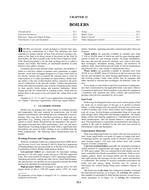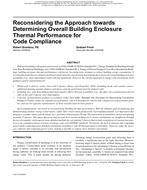The interest in efficient utilization of energy for heating and cooling of multifamily residential dwellings has revitalized the study of the impact of the construction parameters. These parameters not only include those which affect thermal resistance but also those that include thermal inertia or thermal mass. Since heating and cooling of buildings is a transient process, the thermal mass affects the performance of any system. The extent of this effect is the basis for this work. Some standards such as ASHRAE 90-75, the Department of Housing and Urban Development Minimum Prope5rty Standard (HUD-MPS), and the DOE proposed Building Energy Performance Standard (BEPS) include either factors or references based on the mass of the building.
Since much of the work attempted to date-is based on computer modeling, the objective of this paper, Part I, is to evaluate the sensitivity of the heating and cooling loads to some parameters used in the computer model These parameters are internal loads, apartment orientation, and the amount and type of glass. Although these factors are not thermal mass quantities, they may impact on the effects of or the trends produced by thermal mass.
Product Details
- Published:
- 1981
- Number of Pages:
- 18
- File Size:
- 1 file , 1.2 MB
- Product Code(s):
- D-CH-2629
- Note:
- This product is unavailable in Russia, Belarus


